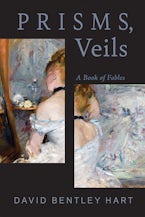She was an overbearing figure who emasculated and infantilised Christ, and who encouraged disruptive and disorderly female behaviour. Long after the figure of the Queen of Heaven was eradicated from the liturgy, evocations such as this ensured that she remained a frequent, powerful presence in the pulpit and within printed religious tract. This chapter takes as its theme this often vitriolic debate. It has at its core the printed versions of sermons that were delivered in high-profile pulpits throughout the country. The many different, often disparate, characters that will air their views are an indication of the widespread continued cultural significance of the Queen of Heaven in Elizabethan and Jacobean England. Their words reveal how the image of the Virgin functioned within the ideological framework both of early modern secular anxieties about queenship and authority, and of a demonising of the Catholic Church that frequently used gendered language. I will first explore how the use of the phrase ‘Queen of Heaven’ as part of a string of titles in medieval litanies was subverted by Protestant polemicists who repeated these lists in mocking form. I will then examine invective against the Queen of Heaven as an authoritative figure, showing how this often translated to assertions about the papistical image of the Virgin as a mother who many Protestant commentators deduced was overbearing towards her son. From the Queen of Heaven as a mother I turn to the Queen of Heaven as a woman, and an exploration of an Old Testament prophetic reference that polemicists often mined to support their cause. This is the story of the disobedient women of Pathros of in the Book of Jeremiah, whose idolatrous worship of a pagan queen of heaven brought about God’s wrath. In spite of the directness of tone of this polemic, pejorative representations of the Virgin as heaven’s Queen are often complex and nuanced, as commentators take pains, sometimes unsuccessfully, to disentangle appropriate levels of respect and veneration for the Virgin as a humble handmaid from their vitriol and loathing of her elevated form. The balance struck is frequently an uneasy one.
The Reformation’s privileging of both the Word and the individual faith of a believer led, inevitably, to a transformation of the role of the preacher, and an increased emphasis on the significance of the sermon. To a certain extent, the initial drive for this was in fact the growth of humanism; pre-Reformation humanist scholars such as Desiderius Erasmus and Bishop John Fisher expanded the preacher’s role, highlighting the importance of preaching in emulation of Christ’s ministry. During the Reformation, this aspect of humanism was retained, and the priest – whose principal role had formerly been one of celebrator of Mass and hearer of confessions – became preacher and interpreter of the Word. An Elizabethan or Jacobean sermon was often a big event: at St Paul’s Cross in the heart of London, an outdoor sermon was delivered every Sunday which was attended by thousands of people and lasted between two and three hours. Patrick Collison has described St Paul’s Cross as ‘the nearest thing that the age offered to broadcasting.’ Visiting London in 1599, the Swiss humanist Thomas Platter recalled how ‘the congregation is so vast that the aforesaid big church will not hold it, so that the sermon is delivered before the church.’ John Donne, who frequently preached at St Paul’s Cross, observed that the place buzzed with noise, and that a sermon could be met with ‘periodicall murmurings and noises’, describing these as ‘impertinent Interjections’ which ‘swallow up one quarter of his houre.’ In spite of the undisputed significance of early modern sermons, they have as a genre been traditionally regarded as a worthy but rather dull area of study, with many earlier monographs wanting to discourage the enthusiast from further investigation. The work of Arnold Hunt, Lori Anne Ferrell and Peter McCullough has thankfully served to disabuse us of this notion, making a concerted effort to free sermon literature from what Ferrell and McCullough describe as ‘an indulgent, even condescending, neglect.’ My own investigations have come about largely as a result of this re-energised academic approach. The historical context of a sermon’s delivery and reception is integral to its cultural significance. The topics of an early modern sermon were often interwoven with key events: sermons, for example, were used as a reiteration of national strength after the Armada and the Gunpowder Plot. As Ferrell and McCullough have commented, sermons were not just words on a page, ‘but instruments of policy, documents of religious change, and expressions of public life.’ Ferrell’s aptly entitled monograph Government by Polemic, is a convincing demonstration of how James I recognised ‘the remarkable power of the word’, highlighting that the sermon was a mouthpiece for the King’s policies. The sermon also had an important role to play within what Tony Claydon has termed the ‘public sphere’, where preaching and the dissemination of news and public thought were viewed as intertwined. The views expressed in sermons were frequently echoed in pamphlet literature. The Antichrist's Lewd Hat, Peter Lake and Michael Questier’s lively review of sermon campaigns against the theatre has explored the overlap between pamphlet and pulpit culture, revealing how the lowbrow of Grub Street (the literary underground of London) were often promulgating similar ideologies to those of the preacher in the pulpit.
There is something of an irony about any academic study which has the printed words of a sermon at its core. A sermon was a performance which often packed a hefty rhetorical punch. Bryan Crockett’s 1995 study The Play of Paradox emphasises the theatricality of the seventeenth-century sermon, observing that the orators of stage and pulpit often used similar rhetorical techniques. Arnold Hunt has described a sermon as ‘specific to the moment of spoken delivery’, and because of this, many preachers were actually reluctant to see their work appear in print. Ultimately, however, the thirst for the printed word won out; as James Rigney has observed, the sermon has an important place in the history of the printed book, and became ‘a public space for the inscription and exchange of views.’ The move from oral delivery into print, however problematic, indicates the long afterlife of a sermon, one which is accentuated by the structured way in which a sermon was heard, from regulated note-taking by schoolboys during its delivery, to fragments appearing in commonplace books and spiritual autobiographies. The topography of the area around the pulpit at St Paul’s Cross itself is compelling evidence of the printed sermon’s popularity, as in close proximity to this preaching venue were a number of booksellers offering prints and reprints of sermons. The same booksellers also sold a variety of other religious books, an indication that sermons were just one of an extensive genre of religious publications that included tracts, biblical commentaries and devotional books. Researching this chapter has been rather like stepping into one of these booksellers’ shops and sampling their wares: my analysis of representations of the Queen of Heaven comes in the main from sermon literature, but I also draw examples from this wider genre of printed religious discourse.
(excerpted from chapter 2)











